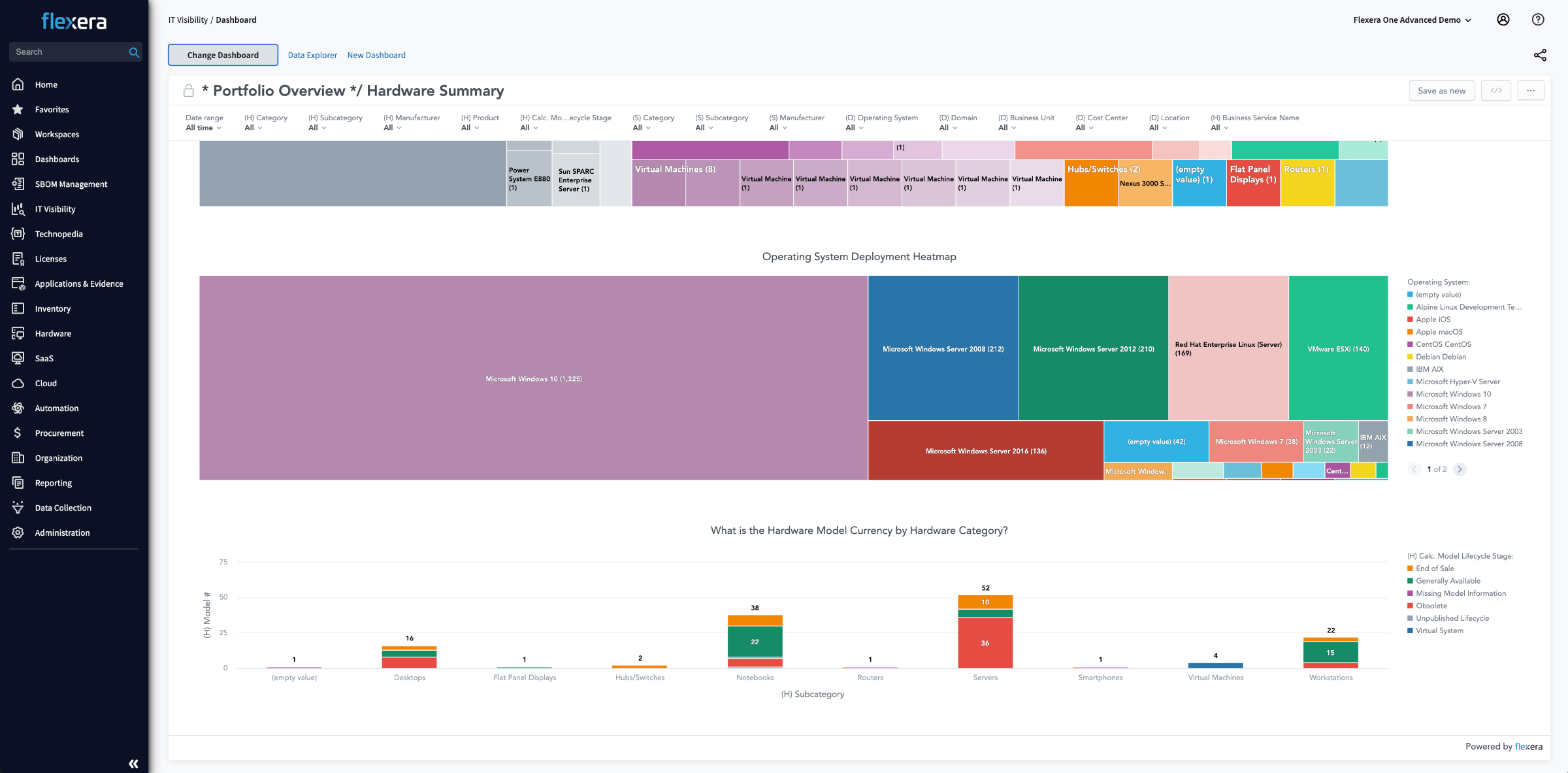Hardware lifecycle management
Enhance your hardware lifecycle strategy
Maximize your hardware investments and make critical hardware lifecycle, migration and modernization decisions with reliable data from Flexera’s Technopedia, the largest and most complete source of technology data.
Recommended Products
Power your IT ecosystem with superior hardware data
Simplify hardware discovery
Discover and contextualize
Flexera discovers, inventories and tracks hardware as it matures through its useful lifecycle and moves within your environment. Even if you already have an inventory tool, Flexera One integrates with it to normalize and enhance data so you can visualize your estate with additional insights such as users, business unit, role and warranty expiration dates.
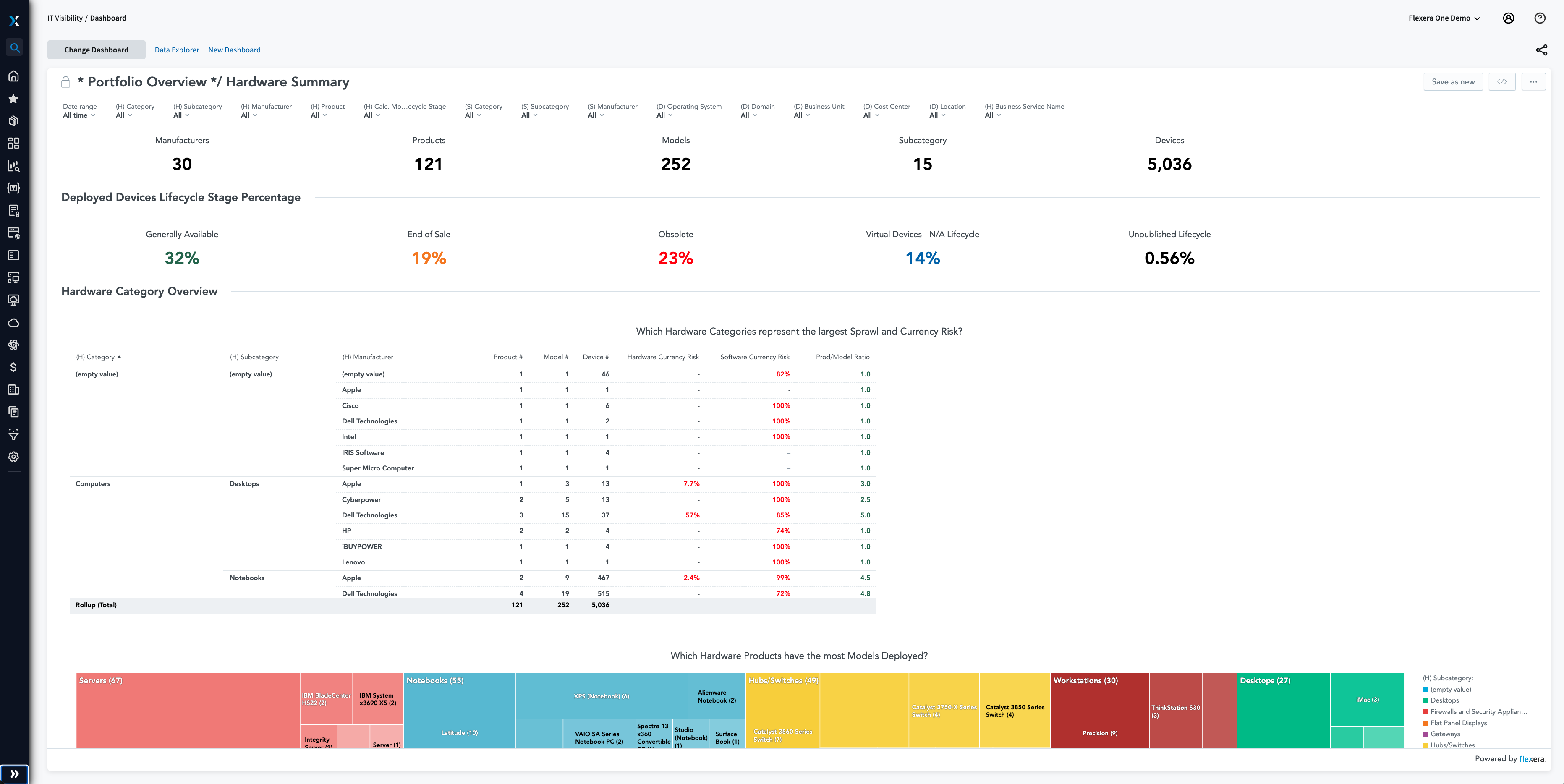
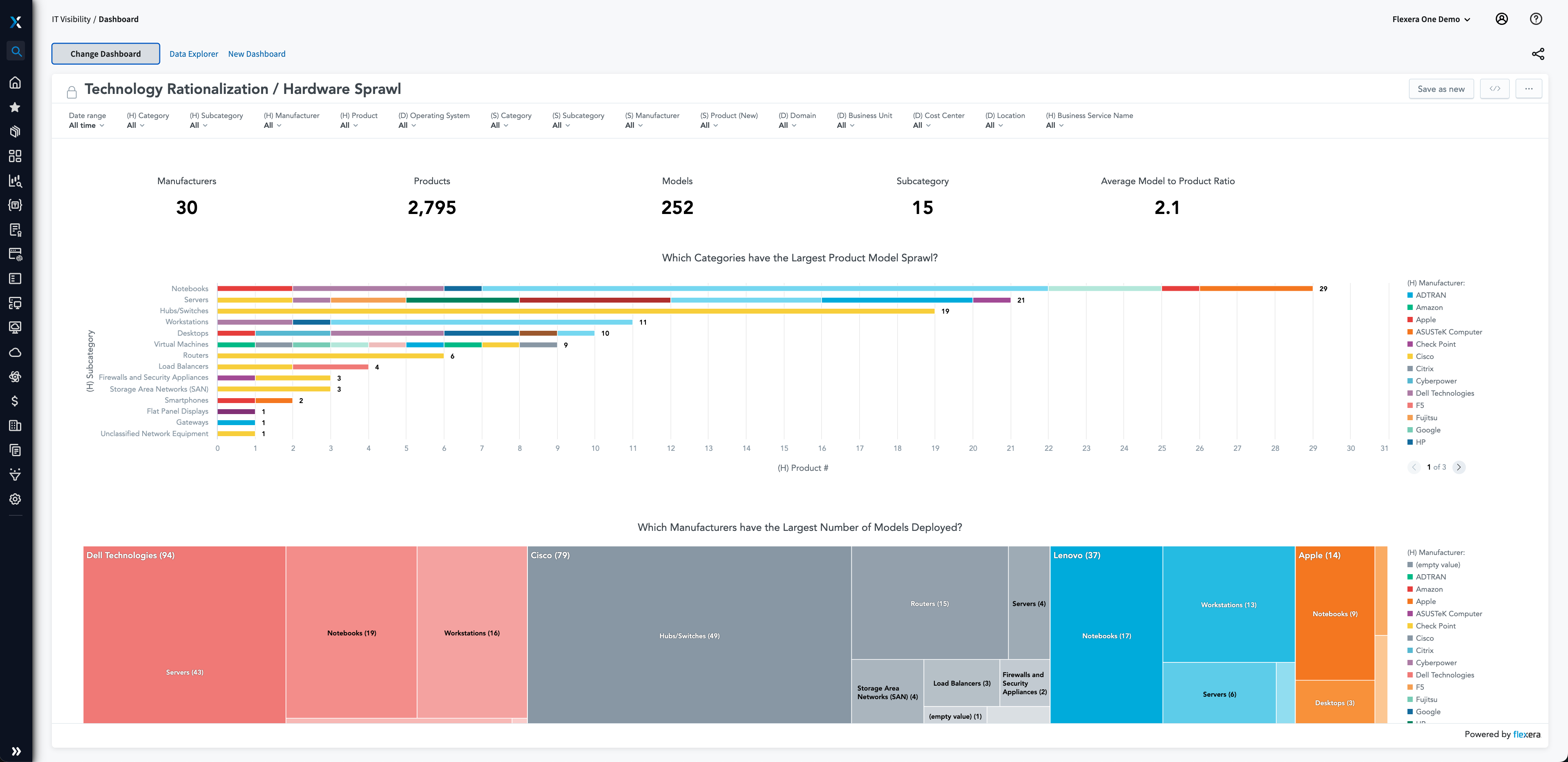
Identify and optimize
Prioritize hardware updates for improved performance
Identify hardware assets with end-of-life (EOL) dates that may be approaching or have already expired, which may pose cybersecurity vulnerabilities. Optimize operational performance by quickly identifying EOL and hardware assets.
Stay in compliance
Ensure your technology portfolio is current
Identify which hardware assets comply with Technopedia EOL and end-of-support (EOS) data. Discover unknown hardware assets running in your business that violate corporate governance so you can plan for upgrades, modernization and extended support costs.
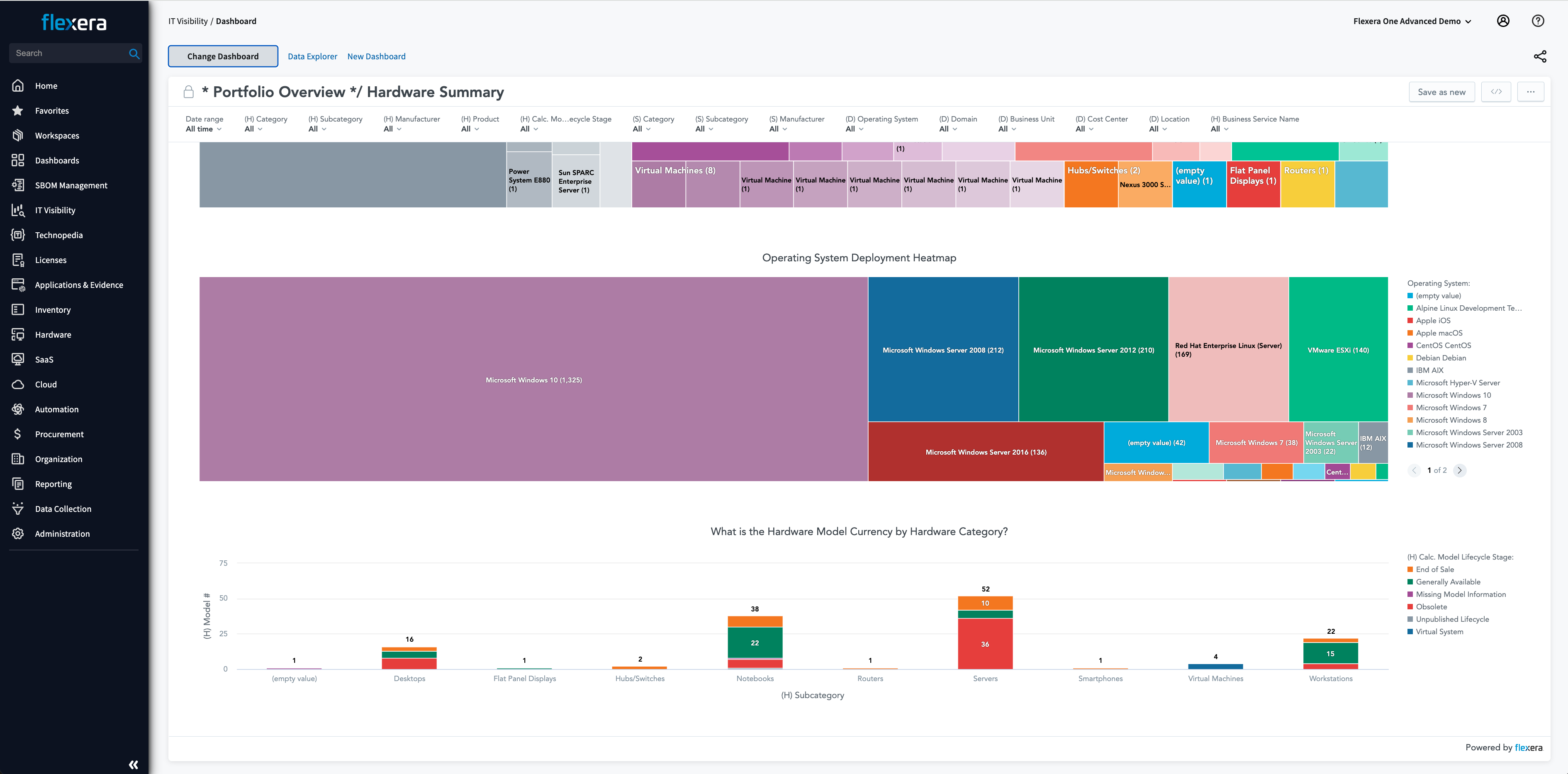
Drive business success
Stay ahead of tech debt
The consequences of failing to remove tech debt and monitor obsolescence can be severe for organizations. From financial losses to security breaches to decreased productivity, the risks are significant. By prioritizing the monitoring and removal of tech debt and obsolescence across your estate, with the myriad technology products your business deploys, you can reduce risk and drive business success. Investing in modern technology and ongoing maintenance and upgrades is a critical step in remaining competitive.
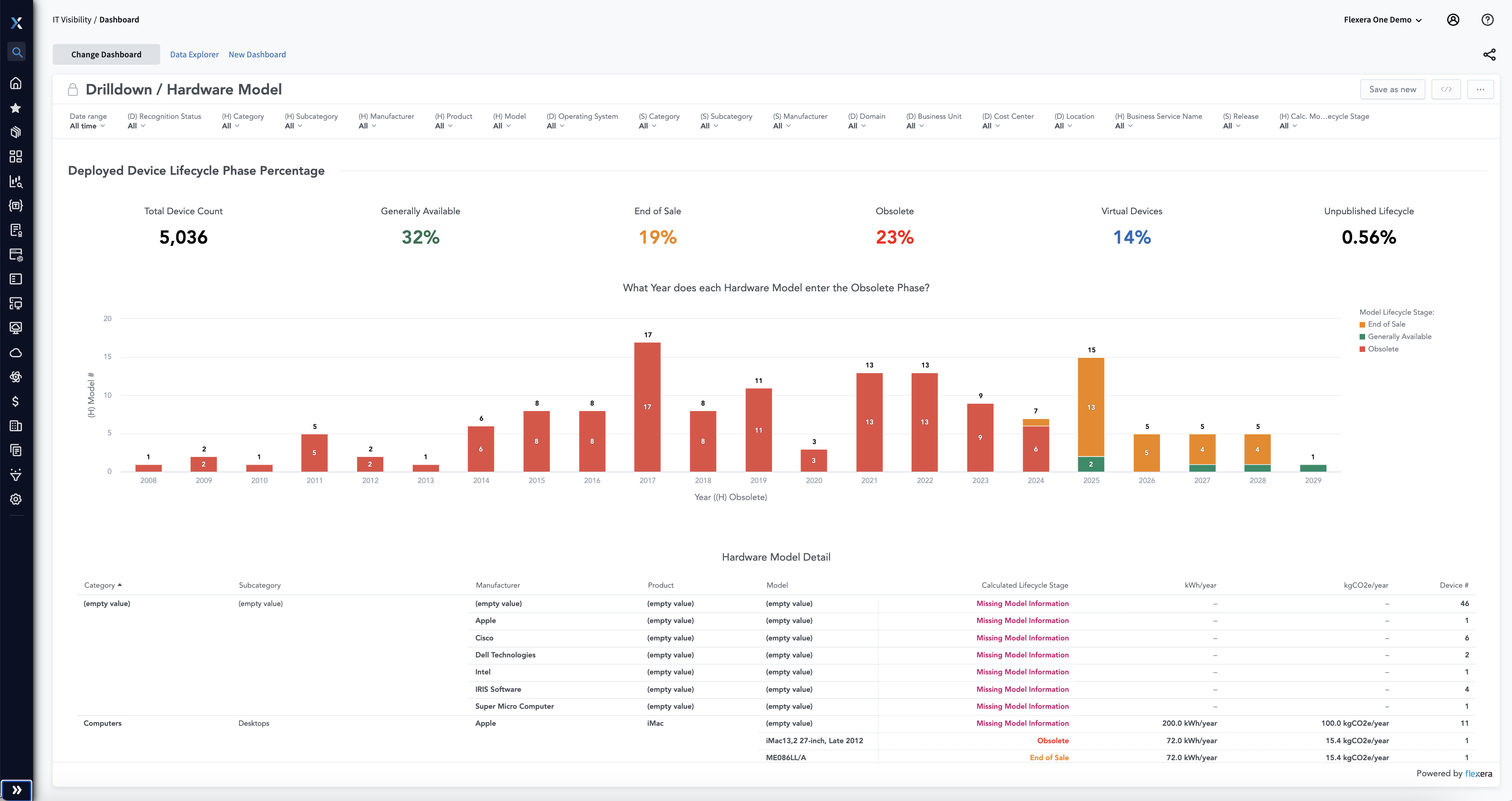

Leverage hardware asset lifecycle best practices
To maximize your ITAM investments, it’s essential to follow IT asset management best practices, which include a lifecycle approach to implementation: planning, acquisition, utilization, maintenance and renewal or disposal. Flexera helps you better equip your organization to deal with sprawling hardware components by recording and tracking each one, helping to reduce costs, mitigate risks and maximize technology investments.
[With Flexera] we could utilize data about our network gear for production systems to monitor the age of that equipment, along with its potential failure points, to prevent production system outages for critical segments of the network.
Frequently asked questions
Technical debt is the cost of maintaining and supporting outdated technology beyond itsend-of-life (EOL) date. This can result in significant expenses and security risks, as outdated software and hardware are more susceptible to vulnerabilities and attacks. Using outdated technology can also lead to decreased productivity and efficiency, as employees must spend time navigating cumbersome and slow systems.
Not all tech debt carries the same level of risk. To identify critical production systems, the services they are tied to need to be evaluated. Some industry examples include:
Healthcare: Electronic health record (EHR) systems used for patient data management and clinical decision-making
Retail: Supply chain management system used for tracking and managing inventory levels, purchase orders and vendor relationships
Manufacturing: Computer numerical control (CNC) machines used for precision manufacturing and quality control
Financial services: Trading systems used for real-time financial data processing and analysis
Transportation: Air traffic control systems used for managing and tracking flights, ensuring safety and efficiency
Energy: Supervisory control and data acquisition (SCADA) systems used for monitoring and controlling power generation, transmission and distribution.
Telecommunications: Network operations centers (NOCs) used for monitoring and maintaining network infrastructure, ensuring uninterrupted service to customers.
Informing IT, Transforming IT
Industry insights to help keep you informed
Video
More value with Technology Intelligence
Our combined power and innovation give you MORE capabilities than ever before through hybrid ITAM, FinOps and SaaS. Maximize the value of your technology with MORE speed, MORE governance and MORE insights in 2024.
Blog
Key stages of the IT asset management lifecycle
Organizations employ multiple information technology (IT) assets at a time, from hardware and software to networks and data. IT asset management (ITAM) using the best IT asset management software (or IoT asset tracking software) helps deal with these components by recording and tracking each one, which helps reduce costs, mitigate risks and maximize technology investments.
Blog
Outdated, inefficient and vulnerable: The consequences of failing to remove tech debt and monitor obsolescence
Webinar
How to build a green IT initiative to meet evolving regulations
Prioritize environmental, social and corporate governance (ESG) initiatives and sustainable IT efforts to keep up with new regulations. Flexera’s Technology Intelligence can help you build and maintain successful, sustainable IT.
Webinar
2024 IT Priorities Report Webinar
Join Flexera and Snow experts in their first webinar since joining forces as they discuss findings from the 2024 IT Priorities Report. We’ll cover the current challenges facing IT leaders, including AI, FinOps and sustainability.
Webinar
ITAM and FinOps for Sustainable IT
Learn about how ITAM and FinOps teams can realize spend efficiency and sustainability.
Manage hardware lifecycle efficiently
Maximize your investments in the hardware that powers your business.

